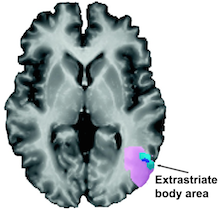Neuroscientists at Emory University have found that people who experience a mixing of the senses, known as synesthesia, are more sensitive to associations everyone has between the sounds of words and visual shapes. The results are published in the European Journal of Neuroscience.
Synesthesia is a stable trait, and estimated to be present in 1 to 4 percent of people. It can be inherited, although the precise genes have not been identified. One of the most common forms of synesthesia is when people involuntarily see particular colors in connection with letters, numbers or sounds.
Many artists and composers have described their experiences with synesthesia. Children with synesthesia say sometimes that it is distracting when they are trying to read. Thus, understanding the origins of synesthesia may help people with dyslexia or other learning differences, or people who have lost their sight or hearing and are trying to engage in sensory substitution for rehabilitation.
Researchers led by neurologist Krish Sathian, MD, PhD, recruited 17 people with synesthesia, and asked them to take a form of the IAT (implicit association test). Known for its use probing social attitudes such as racial prejudice, the IAT can also assess “cross-modal correspondences.”
An example of a cross-modal correspondence is that we describe musical notes as being “high” or “low” – words that also signify relative positions in space. Another is that we think of some sounds such as “m” and “l” as soft, and are more likely to associate them with rounded shapes. Similarly, we connect hard sounds such as “k” and “t” with angular shapes.
“There’s been a debate about synesthesia,” Sathian says. “Are the associations synesthetes have just extreme versions of cross-modal correspondences that other people have, or are they qualitatively different?”
Sathian and his colleagues found that people with synesthesia were more sensitive to correspondences between the sounds of pseudowords — words without meaning in English — and rounded or angular shapes. Read more





